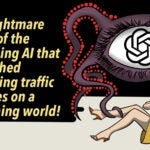B2B advertisers historically have been slower to adopt programmatic than their B2C brethren.
That lag is because B2B was mostly marketed through a company’s owned properties, lead forms or offline events. The market for B2B exchange data also wasn’t very robust.
But as B2B publishers expand their programmatic offerings and the buy side adopts more sophisticated targeting, B2B programmatic is starting to hit its stride.
CBS Interactive, for example, which owns pubs catering to IT and business professionals, such as TechRepublic and ZDNet, is creating value for advertisers by packaging its own first-party data insights with second- or third-party data sets.
“We don’t put everything on the open exchange, [so we’re] working with [B2B advertisers] to define audiences in PMPs,” Rick Corteville, VP of product marketing for CBS Interactive, said Tuesday at Programmatic I/O in San Francisco. “We focus on business intelligence, which lends itself to making quality recommendations.”
Because B2B advertisers typically target other companies or accounts, not individuals, CBSi uses Google and Adobe technology to help clients find existing account targets or to net new ones.
“We work with first-party data and layer in third-party data to prove how we moved the needle,” Corteville added. “We’re finding over 90% of our impressions served are on [targeted] account-based lists versus a general open [exchange] campaign.”
However, if B2B advertisers hone in on audiences more precisely but still rely on generalized creative, precision targeting is a missed opportunity.
“The creative you put forth to individuals is super important and a constant challenge,” Corteville said.
B2B buyers shouldn’t slice and dice audiences while forgoing sequential messaging or considering how creative carries a storyline.
“Dynamic creative is sexy, but when you have all of this information that’s relevant to your audiences, how might you craft an ad differently because you have those data insights?” asked Julie Keshmiry, global media director for Intel, speaking earlier that day at the conference.
Although Intel makes the chips for consumer devices like laptops, it’s a 50-year-old company going through a digital pivot as it expands to serve a wider variety of business decision-makers.
About 70% of a consumer’s interaction with a B2B company happens digitally before there’s ever an interaction with salesperson – mostly through its website, emails or lead-gen programs, Keshmiry said.
And more channels reaching B2B audiences create more data exhaust.
“That means we get a lot more signals back about our audience now, which will help us to get more creative with landing pages and more of our owned [properties],” Keshmiry said.














